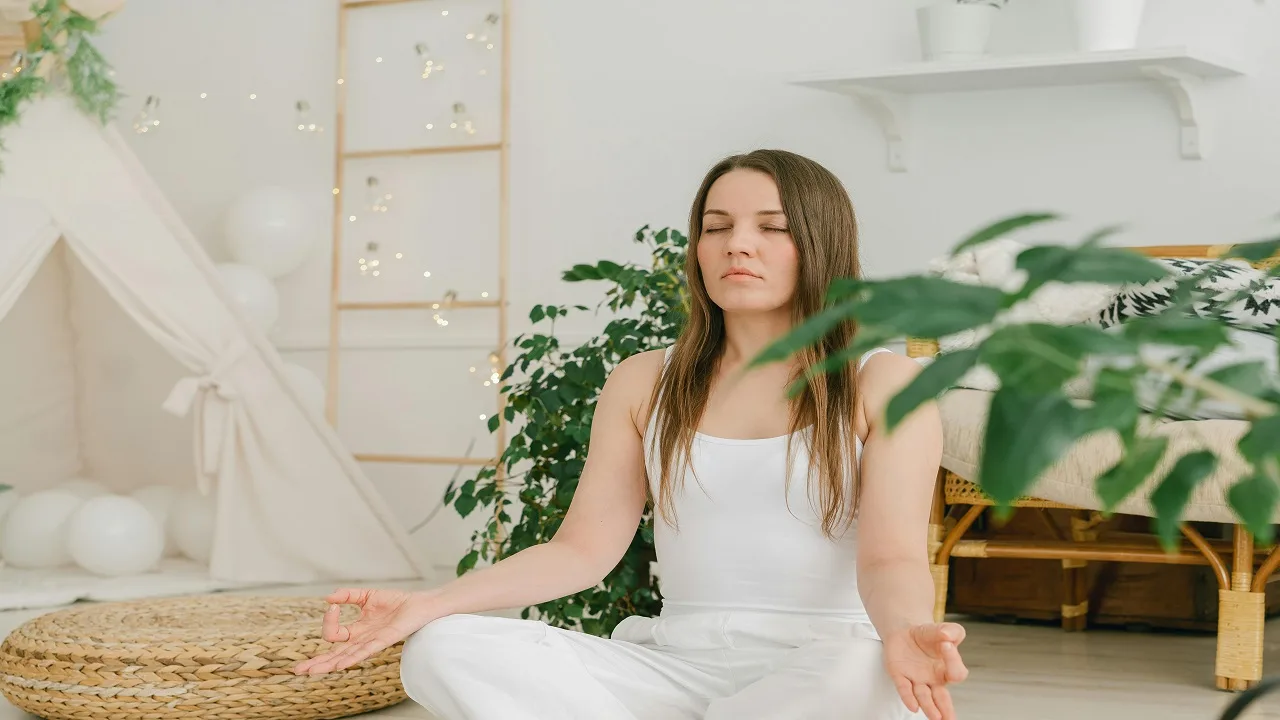Lotus Pose (Padmasana) is a famous yoga position for meditation and mindfulness. This sitting stance has long been connected with spiritual progress, tranquility, and clarity. The physical stillness of Padmasana calms the mind, promoting profound concentration. Many meditations start with Lotus Pose, which promotes mental stability and awareness by keeping practitioners present. This article discusses Lotus Pose, meditation, and focus and concentration.
A Foundation for Meditation
Lotus Pose is the classic meditation position because it enables practitioners to sit erect with a firm basis. This symmetrical stance crosses the legs with each foot on the opposing thigh. This balanced posture supports lengthy periods of silence, which is crucial for meditation and inner awareness.
Padmasana opens the chest and lengthens the spine, enabling the practitioner to sit for long durations without slouching or collapsing. The upright position allows deep breathing, which calms the mind and helps you meditate. Lotus Pose stabilizes practitioners, letting them concentrate on their breath or meditation.
Promoting Focus and Concentration
Lotus Pose improves attention and focus. Padmasana helps mental clarity by stilling the body and mind. As the body relaxes into this grounded posture, practitioners may focus on their breath or a single location, reducing distractions and mental clutter.
Lotus Pose’s symmetry balances the body and mind, promoting mental peace. This equilibrium helps meditation and mindfulness practitioners concentrate by stabilizing their minds. Holding the position longer trains the mind to remain grounded, bringing the present closer.
Padmasana’s constant bodily alignment activates the crown chakra (Sahasrara) and third-eye chakra (Ajna), which are connected with greater awareness and mental clarity. Lotus Pose allows practitioners to reach these energy centres, improving concentration and focus during meditation.
Physical Benefits of Lotus Pose
Lotus Pose has physical and mental advantages. The pose profoundly stretches the hips, knees, and ankles, improving lower body flexibility. Padmasana helps enhance hip mobility and leg tightness for those who sit all day.
Lotus Pose improves posture with its leg-spine symmetry. Keep the spine straight and chest open to enhance postural awareness and posture throughout the day.
Sitting motionless in Padmasana strengthens the back and core, which support the spine. This strength helps keep the spine straight during extended meditations, reducing lower back pain.
Cultivating Mental Calmness and Inner Awareness
Lotus pose promotes inner awareness, peace, and physical and mental advantages. The stance emphasizes introspection on the breath or a single place. This internal attention calms the mind and reduces distractions, bringing tranquillity.
As the body stays motionless in Padmasana, the mind becomes more aware of subtle sensations like breath and heartbeat. This increased awareness helps practitioners connect with their inner self, increasing mindfulness and emotional equilibrium.
Lotus Pose may help sufferers of stress, anxiety, and mental exhaustion achieve serenity and clarity. The contemplative stance calms the nervous system, reduces anxiety, and relaxes the mind. Padmasana promotes mental health and emotional healing via silence and reflection.
How to Practice Lotus Pose
Start Lotus Pose by sitting comfortably on the floor with your legs stretched before you. Bend your right knee and place your right foot on your left thigh near your hip. Bend your left knee and place your left foot on your right thigh to create a symmetrical cross-legged stance.
Keep your spine long, chest wide, and shoulders relaxed. Place your palms up and hands on your knees or lap. Practice deep breathing and gentle exhalation. Stay quiet and aware for several minutes in the posture.
If full Lotus Pose is too tricky, try Half Lotus Pose (Ardha Padmasana), where one foot is on the opposite thigh, and the other is crossed below.
